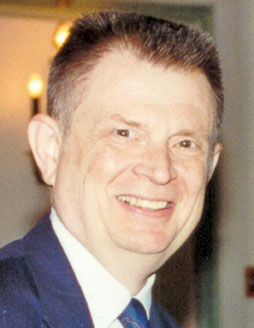Osaka, Japan was the special venue for the annual IEC/CISPR two week meeting last October. The high point of these meetings is where the National Committees (NCs) gather in a plenary session to hear the status of CISPR as well as to make decisions on major issues needing NC approval. These decisions are made by the heads of the delegations (HoDs) and represents generally the consensus of the over 200 attendees as expressed through the HoD.
To recap, following are many of the issues discussed and reports given which represents the outcome of the plenary session.
First, here are the officers of the CISPR and its Subcommittees:
• Officers
• Don Heirman (Don HEIRMAN Consultants), Chair starting 1 October 2007
• Martin Wright (British Telecom), Vice-Chair starting 1 October 2007
• David Eardley (retired), Secretary—incumbent
• Subcommittee Chairs (reconfirmed starting 1 October 2007)
• Manfred Stecher (Rohde & Schwarz)—Chair SC A (basic measurements)
• Bernd Sisolefsky (Siemens)—Chair SC B (Industrial, Scientific and Medical)
• Poul Andersen (Retired)—Chair SC D (automotive)
• Beniamino Gorini (Alcatel-Lucent)—Chair SC H (generic limits)
• Martin Wright—Chair SC I (IT, Multimedia)
Other issues discussed were:
• The revised Guide 107 (Guide to drafting EMC publications) is in ballot by the IEC Council
• Guide 108 (horizontal standards designation) points to Guide 107 for EMC
• Reviewed CISPR publications since last year
• Identified CISPR Guide on IEC web site to help product committee use of CISPR standards
 |
 |
Akira Sugiura, Chair of the Japanese National Committee for CISPR, proposes a toast at the opening ceremony held during the banquet. He welcomed all delegates to the CISPR meetings in Osaka, Japan. |
(From left) Peter Kerry (Past President, CISPR), Rémy Baillif (IEC/CISPR Technical Officer), Elaine Wright, and Martin Wright (Chairman of CISPR SC I) are shown with a banquet captain at the opening ceremony breaking up a barrelhead of Japanese rice wine using wooden hammers. |
Next, there was a discussion and an overwhelming agreement that CISPR should remain a special committee as it has membership other than National Committees which is what the case is for the other technical committees of the IEC. To make this clear, there is now a unique Annex (K) in the ISO/IEC Directives where the role of the liaison members of international organizations other than national committees is given. The details as to who are the members and hence who has the right to comment on CISPR committee documents is on the CISPR home page on the IEC URL:
(https://www.iec.ch/dyn/www/f?p=102:7:0::::FSP_ORG_ID:1298).
Another “hot” topic was the equivalency of multiple test methods (primarily radiated emission measurements) when more than one is given in a standard to use for product compliance. The issue came up as there is a clause in the supplement to the ISO/IEC directives that states that when there are multiple test methods in a standard; one has to be identified as the referee (reference) method which is the preferred method. This led to a lively discussion of what that really meant and what is equivalent and what method can the manufacturer use.
To make it clearer (hopefully), here is what was decided by representatives of the CISPR national committees at the CISPR plenary meeting. First, the definition of reference method was stated to be:
• Reference Test Method
• Stating preferred test method when multiple test methods for the same compliance test in the same product standard
After full deliberation, there was the following decision:
• Plenary Decision
• “Where a standard gives options for testing particular requirements with a choice of test methods, compliance can be shown against any of the test methods using the appropriate limit. In any situation where it is necessary to re-test the equipment, the test method originally chosen should be used in order to guarantee consistency of the results.”
The question then remained as to who makes the choice or should the standards writers on their own have only one test method for a particular phenomena? For example, in the above decision it may be that the test lab makes the choice of the test method on behalf of the manufacturer which presented their product to the lab for compliance measurements. In the case of the replacement standard for the popular CISPR 22 covering ITE requirements, there is a preference in the draft CISPR 32 for selecting one test method for measuring radiated emissions that uses a fully absorber lined room (FAR) rather than a semi-anechoic chamber.
There were further technical discussions including a review of the proposal by the Swiss NC to have a joint task force (JTF) with IEC TC77 (EMC) covering the basics for measurement uncertainty. This was considered appropriate as both committees need to use the basics of measurement uncertainty to look at the total EMC picture including both emissions and immunity. At the present, CISPR has published standards covering the topic for radiated and conducted emission measurements as well as power measurements. This is contained in CISPR 16-4-2. Other work on the topic is contained in CISPR 16-4-1.
Under other business, CISPR expanded their English editing committee to help all those that are drafting text for standards and do not have English as their native language. Finally, there was an announcement that the next CISPR meeting will be in Lyon, France at the end of September 2009. It was also noted that the following meeting will be in Seattle, Washington in 2010. The latter meeting will be in conjunction with the IEC General Meeting. EMC
 EMC Standards Activity:
EMC Standards Activity: 
